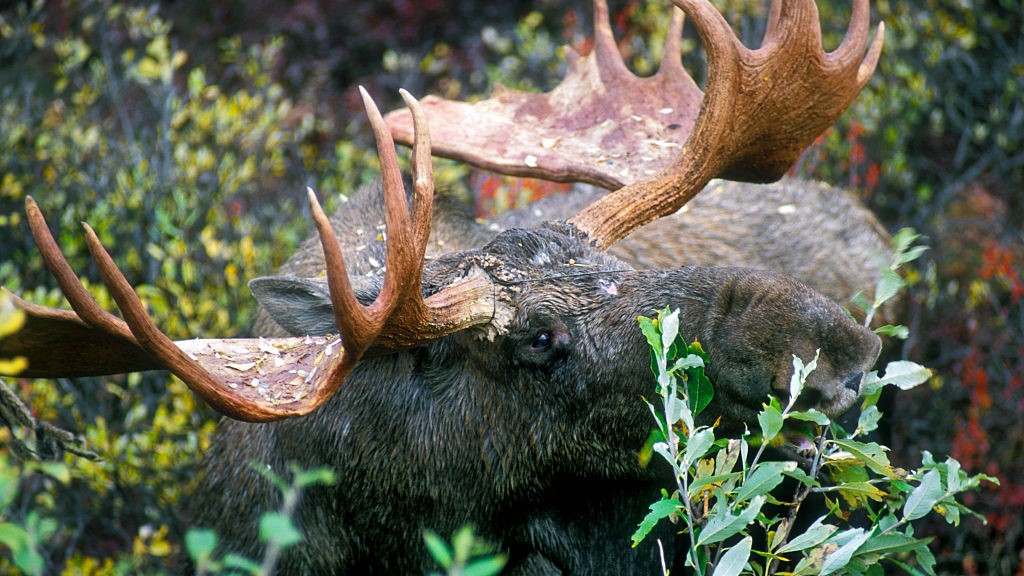Rabid moose found 'stumbling, drooling profusely' is 1st case ever recorded in Alaska
Scientists analyzed the moose's brain and detected a variant of rabies usually found in Arctic foxes, suggesting it contracted the virus from a fox.

Scientists have confirmed the first ever case of rabies in an Alaska moose after a diseased animal stumbled into a small community and charged at residents while "drooling profusely."
The moose was euthanized shortly after it wandered into Teller, western Alaska, on June 2.
"The moose was unbalanced, stumbling, drooling profusely, and had bare patches of skin," Doug Vincent-Lang, the commissioner of Alaska's Department of Fish and Game (ADF&G), wrote in a statement. The animal was also "acting aggressively towards people."
A necropsy later detected rabies virus in the moose's brain. Scientists at the Centers for Disease Control and Prevention (CDC) confirmed the finding on June 6.
Rabies is a virus that spreads through saliva and can occur in all warm-blooded mammals. Rabid animals often become aggressive and salivate excessively, or foam at the mouth. They may appear to be shaking or having seizures and display bite marks. Animals infected with the virus also behave abnormally, sometimes chewing on rocks and other non-food items.
ADF&G said the virus detected in the moose was the same variant of rabies circulating in Arctic foxes (Vulpes lagopus) and red foxes (V. vulpes) this past winter, "suggesting that the moose contracted the virus from a fox," the statement said.
Related: Zoo anteater exposed people to rabies in first-of-its-kind case
Sign up for the Live Science daily newsletter now
Get the world’s most fascinating discoveries delivered straight to your inbox.
Rabies is enzootic in Arctic and red fox populations along the northern and western coasts of Alaska, meaning the disease is always present — but at very low levels. Every now and again, a flare-up of infections leads to outbreaks in foxes that can spill over to dogs, wolves, caribou and polar bears.
However, this is the first rabid moose ever documented in Alaska. Previous cases of this disease in moose have been recorded in South Dakota, Minnesota, Canada and Russia, but rabies diagnosis in these animals is rare because they are solitary, according to the statement.
Moose (Alces alces) are the largest members of the deer family. The Alaska-Yukon subspecies (A. alces gigas), of which there are between 175,000 and 200,000 individuals in Alaska, is the bulkiest of these antlered creatures and can weigh up to 1,600 pounds (730 kilograms).
Scientists don't think this individual case is indicative of an outbreak or that it will lead to one in Alaska. "Due to the largely solitary nature of moose, it is very unlikely that any rabies outbreak will occur in the moose population," the statement said.
However, until now, only moose displaying signs of disease were screened for rabies in Alaska. Buthis unprecedented case recorded has prompted new plans to increase surveillance and testing in wild mammals found dead or killed in regions where fox rabies occurs, according to the statement.

Sascha is a U.K.-based staff writer at Live Science. She holds a bachelor’s degree in biology from the University of Southampton in England and a master’s degree in science communication from Imperial College London. Her work has appeared in The Guardian and the health website Zoe. Besides writing, she enjoys playing tennis, bread-making and browsing second-hand shops for hidden gems.









